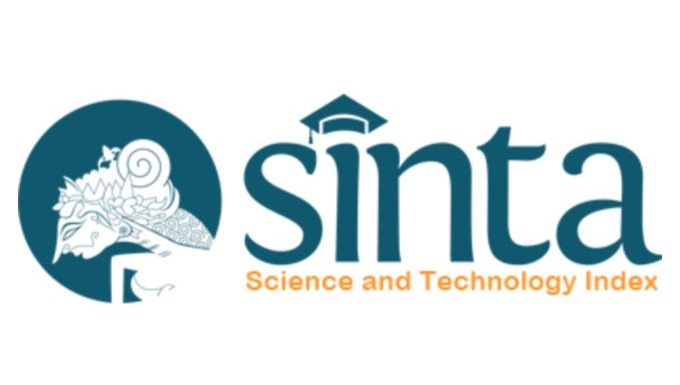Acute Symptomatic Covert Abdomen in Acute Heart Failure Patients: Early Identification with Emergency Ultrasound
Case Report
DOI:
https://doi.org/10.55175/cdk.v52i4.1274Keywords:
Acute abdomen, acute heart failure, septic, USGAbstract
Background: The use of USG (ultrasonography) in the ED (emergency department) has grown rapidly to aid decisions on management. Case: A 71-year-old woman with a history of heart disease, in shock condition, fever for 2 days, and diarrhea was referred with diagnosis of cardiogenic shock. On physical examination there were no signs of an acute abdomen, with suspicion of sepsis. Chest x-ray and urine examination did not find signs of infection. During treatment, consciousness and vital signs worsened; abdominal ultrasound showed signs of acute abdomen which was confirmed by 2-position abdominal x-ray. Discussion: In this case, the final diagnosis was septic shock with cardiogenic shock due to secondary peritonitis due to perforated viscous organ and electrolyte imbalance (mild hyponatremia and hypochloremia), altered mental state and geriatric problem. Surgery was not possible due to the patient’s condition. The patient succumbed on the 2nd day of treatment. Conclusion: Bedside ultrasound examination helps to establish an earlier diagnosis in patients especially with atypical symptoms and may be the key to providing better medical decisions in the ED.
Downloads
References
Spampinato MD, Luppi F, Cristofaro E, Benedetto M, Cianci A, Bachechi T, et al. Diagnostic accuracy of point of care ultraSound (POCUS) in clinical practice: A retrospective, emergency department based study. J Clin Ultrasound. 2023;1:1–10. DOI: 10.1002/jcu.23619.
American College of Emergency Physicians. Ultrasound guidelines: Emergency, point-of-care, and clinical ultrasound guidelines in medicine. American College of Emergency Physicians; 2023 .p. 1–63.
Whitson MR, Mayo PH. Ultrasonography in the emergency department. Crit Care 2016;20(1):1–8. DOI: 10.1186/s13054-016-1399-x.
Cortellaro F, Perani C, Guarnieri L, Ferrari L, Maconi G, Aseni P. Point-of-care ultrasound in the diagnosis of acute abdominal pain. Operative Techniques and Recent Advances in Acute Care and Emergency Surgery. Springer; 2019. p. 383–401.
Al Ali M, Jabbour S, Alrajaby S. ACUTE ABDOMEN systemic sonographic approach to acute abdomen in emergency department: A case series. Ultrasound J.2019;11(1):4–9. DOI: 10.1186/s13089-019-0136-5.
Abdolrazaghnejad A, Rajabpour-Sanati A, Rastegari-Najafabadi H, Ziaei M, Pakniyat A. The role of ultrasonography in patients referring to the emergency department with acute abdominal pain. Adv J Emerg Med. 2019;3(4):e43. DOI: 10.22114/ajem.v0i0.152.
Kozaci N, Avci M, Tulubas G, Ararat E, Karakoyun OF, Karaman C, et al. Role of emergency physician–performed ultrasound in the differential diagnosis of abdominal pain. Hong Kong J Emerg Med. 2020;27(2):79–86. DOI: 10.1177/1024907918808.
Osterwalder J, Polyzogopoulou E, Hoffmann B. Point-of-care ultrasound—history, current and evolving clinical concepts in emergency medicine. Med. 2023;59(12):1–16. DOI: 10.3390/medicina59122179.
Shaikh AH, Tandur AE, Rathod AG, Dhanorkar T. Perforation peritonitis: As a spectrum. Int Surg J. 2022;9(11):1804. DOI: https://doi.org/10.18203/2349-2902.isj20222931.
Spangler R, Van Pham T, Khoujah D, Martinez JP. Abdominal emergencies in the geriatric patient. Int J Emerg Med. 2014;7(1):1–8. DOI: 10.1186/s12245-014-0043-2.
Hofman MR, Van Den Hanenberg F, Sierevelt IN, Tulner CR. Elderly patients with an atypical presentation of illness in the emergency department. Neth J Med. 2017;75(6):241–6. PMID: 28741583.
Jones TW, Smith SE, Van Tuyl JS, Newsome AS. Sepsis with preexisting heart failure: Management of confounding clinical features. J Intensive Care Med. 2021;36(9):989–1012. DOI: 10.1177/0885066620928299.
Evans L, Rhodes A, Alhazzani W, Antonelli M, Coopersmith CM, French C, et al. Surviving sepsis campaign: International guidelines for management of sepsis and septic shock 2021. Crit Care Med J. 2021;49:1063–143. DOI: 10.1007/s00134-021-06506-y.
Arrigo M, Jessup M, Mullens W, Reza N, Shah AM, Sliwa K, et al. Acute heart failure. Nat Rev Dis Prim. 2020;6(16):1–15. DOI: 10.1038/s41572-020-0151-7
Tartavoulle T, Fowler L. Cardiogenic shock in the septic patient: Early identification and evidence-based management. Crit Care Nurs Clin North Am. 2018;30(3):379–87. DOI: 10.1016/j.cnc.2018.05.006.
Rhodes A, Evans LE, Alhazzani W, Levy MM, Antonelli M, Ferrer R, et al. Surviving sepsis campaign: International guidelines for management of sepsis and septic shock: 2016. Crit Care Med. 2017;45:486–552. DOI: 10.1007/s00134-017-4683-6.
Mathew R, Di Santo P, Jung RG, Marbach JA, Hutson J, Simard T, et al. Milrinone as compared with dobutamine in the treatment of cardiogenic shock. N Engl J Med. 2021;385(6):516–25. DOI: 10.1056/NEJMoa2026845.
Schwinger RHG. Pathophysiology of heart failure. Cardiovasc Diagn Ther. 2021;11(1):263–76. DOI: 10.21037/cdt-20-302.
PoSaw LL, Wubben BM, Bertucci N, Bell GA, Healy H, Lee S. Teaching emergency ultrasound to emergency medicine residents: A scoping review of structured training methods. JACEP Open. 2021;2(3):1–15. DOI: 10.1002/emp2.12439.
Downloads
Published
How to Cite
Issue
Section
License
Copyright (c) 2025 Hari Adityo Nugroho, Ari Prasetyadjati, Willy Johan

This work is licensed under a Creative Commons Attribution-NonCommercial 4.0 International License.





















